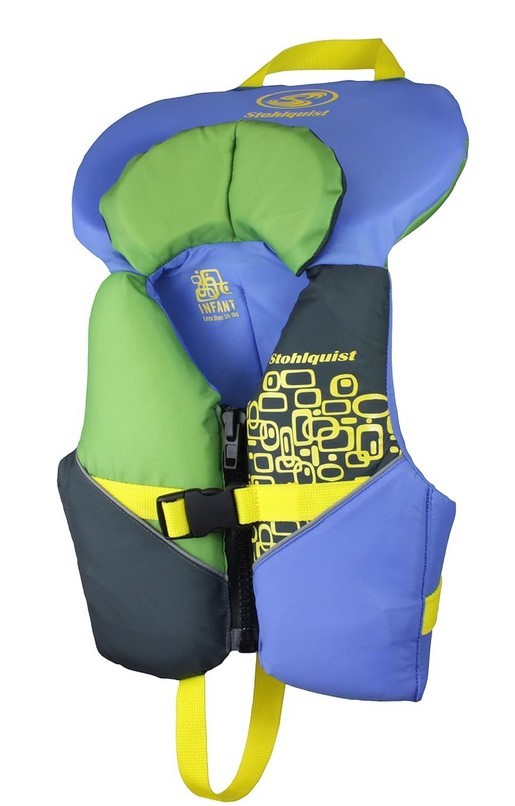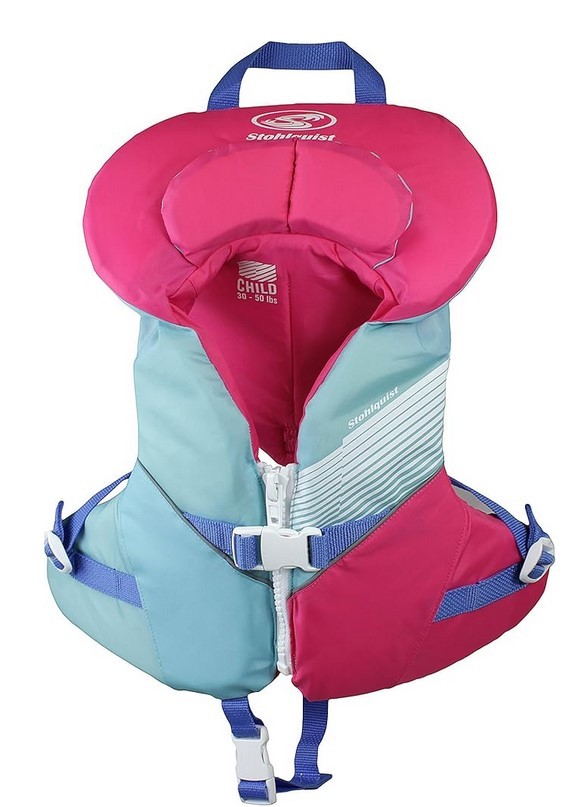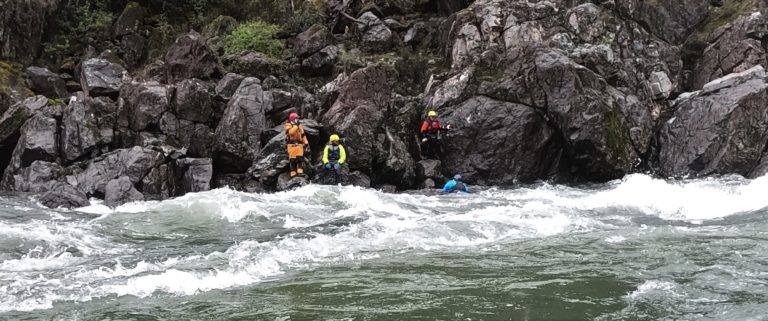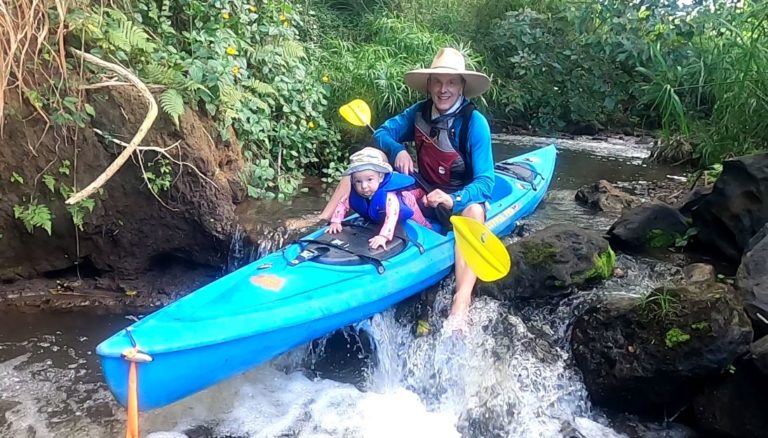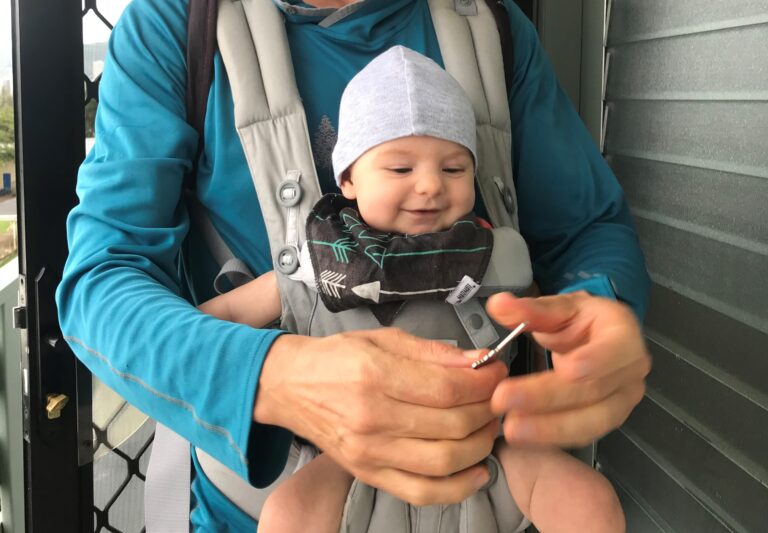As a parent, choosing the optimal flotation device can be challenging with many options on the market and a variety of water safety needs. In this article, we take a closer look at three popular types of flotation devices for kids and toddlers: lifejackets (swim vests), lifejackets with water wings, and back float swim trainers (floaties). We will discuss the price, fit, performance, and best uses we’ve found for each device for playing in pools, rivers, and the ocean.
Traditional Lifejacket
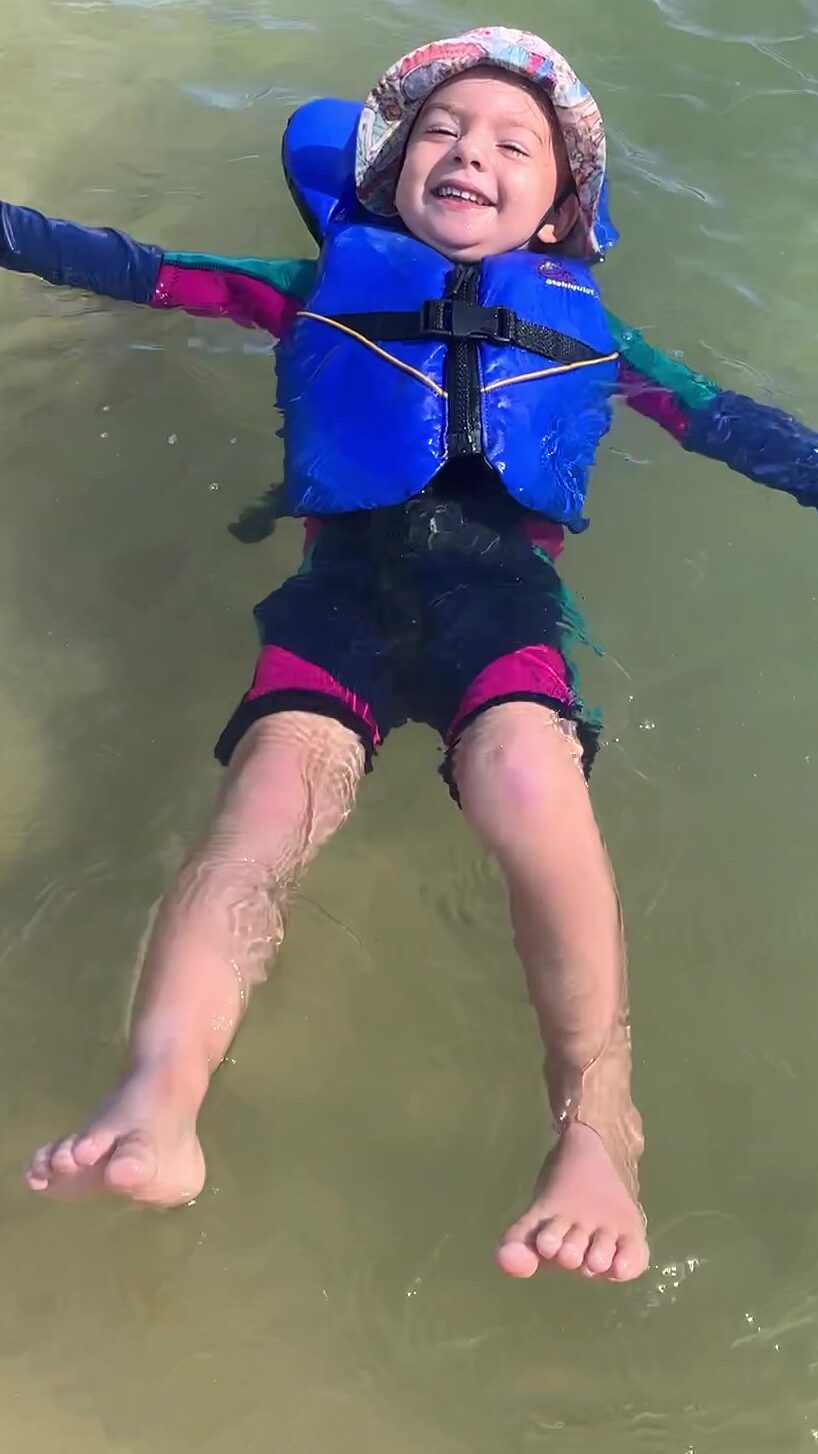
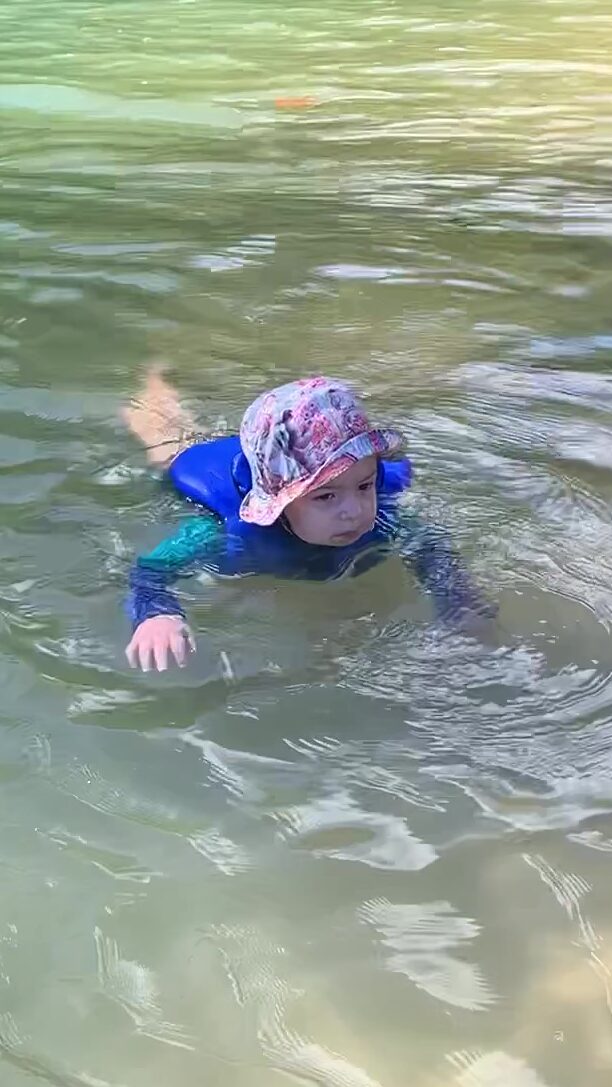
Traditional lifejackets, more commonly know as personal flotation devices (PFDs), require Coast Guard Approval and are broken down into different types (I, II, III, and V). These vests ideally float kids on their backs making them great for unexpected swims in rivers and lakes when boating. However, when swimming kids often struggle to get off their backs. Our daughter disliked using her PFD in the water when she was younger but didn’t mind running around in it. As she got older (around 2 1/2 years old) she had enough body control to get off her back and move around in the vest.
One big advantage of most kid PFDs is that they have a “crotch strap” that goes around the kids crotch to ensure the vest will not slide up over a child’s head and potentially come off.
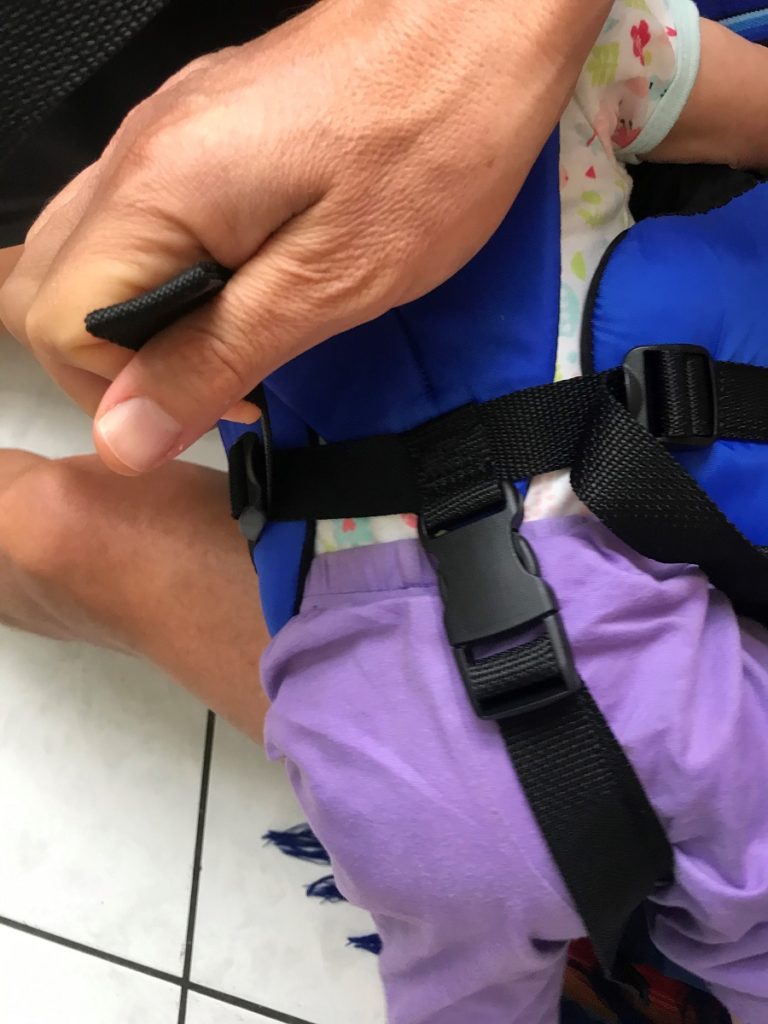
The Stohlquist Infant and Children’s Life Jackets are the best PFD’s we’ve come across. They feel better made and the infant version fit our baby securely from birth and floated her well. We preferred it over floaties/water wings due to the PFD allowing for more natural arm movements in the water and it being a traditional life jacket design. See our in-depth review of the Stohlquist Infant Life Jacket.
The life jacket flotation is also free of toxic PVC materials. Note that the vest states it “will turn only some children to a face-up position.”
With the traditional PFDs you get what you pay for. While you can get them for less the $30 the really solid ones are around $60. One big advantage of most infant and kid PFDs is that they have a “crotch strap” that goes around the kids crotch to ensure the vest will not slide up over a child’s head and potentially come off.
PFD in Action (See Video Below)
Lifejacket with Water Wings
Some swim vests like Body Gloves Paddle Pals are also U.S. Coast Guard approved type III/V life jackets. This is the best option if you want your kids in a secure vest that allows for comfortable floating vertically in the water. This particular vest is approved for kids 33 to 55 lbs. The Sterns Puddle Jumper version is for kids 30 to 50 lbs. A big problem for us with these vests is we wanted our daughter to be able to float around independently well before she was heavy enough and big enough for these vests.
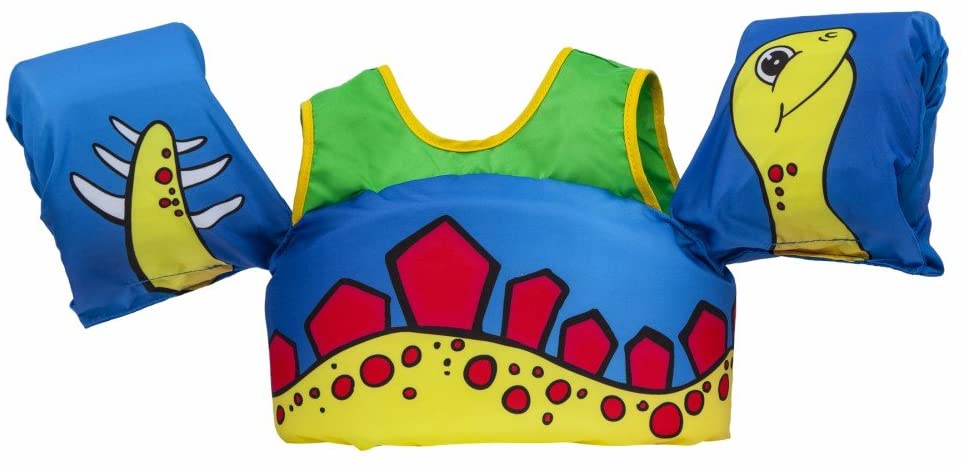
In addition, these are not ideal for river travel since they float kids upright with their feet dangling below increasing the risk of a foot entrapment. Finally they don’t allow kids to make natural arm movements for swimming. However, swim vests with wings seem like the best option if you are going to a busy pool and want your non-swimming child to be able to play independently in the water with supervision from land. The vest secures well and floats kids in a comfortable upright position.
Unfortunately, it appears that most of these type of flotation devices do not have the additional safety factor of a crotch strap.
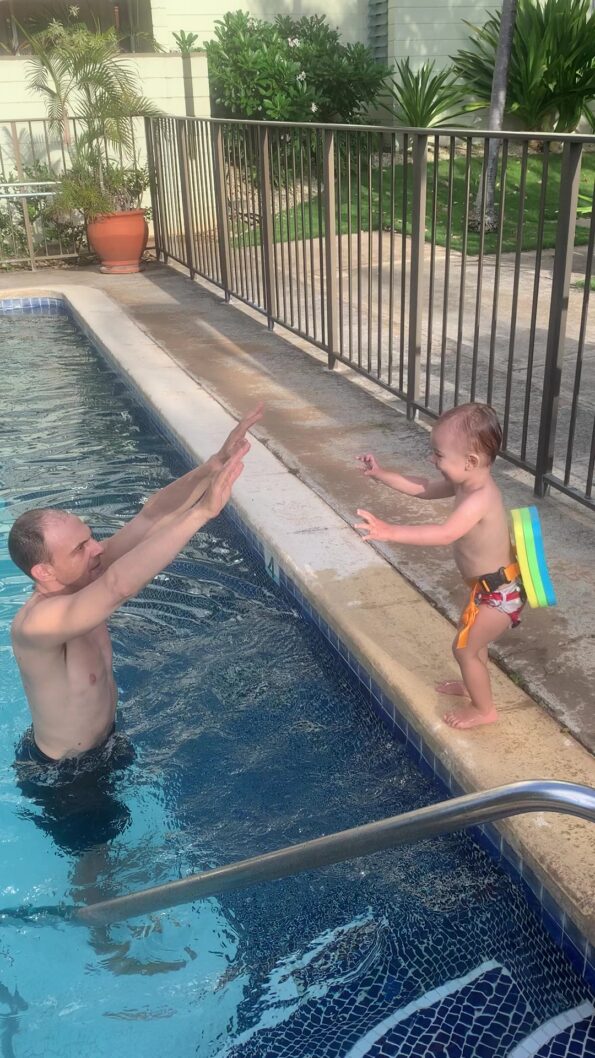
Back Floaties
Our favorite flotation device to use at pools, back float have a low profile allowing for natural arm movements and swimming position. We”ve found back floaties provide the best option for a kid that is trying to learn how to swim. They also make it easy for kids to practice climbing out of the pool.
Less expensive and less secure than the other options, back floats are easy to take on and off. As your child becomes a stronger swimmer the flotation can be removed over time. Another advantage of back floats is that they dry quickly.
The one we purchased said it was for children 33-165 Pounds and 3-10 years old. Since our child was younger and weighed much less than their minimum recommendation we kept a close eye on her when she used the swim trainer. It also helped that we took off one of the four floats since she weighted around 22 pounds. Still at 1.5 years old she was able to move around independently with the back float and would even climb out of the pool and jump back into the water.
It wasn’t until she was 2 1/2 years-old that she really started progressing and she wanted us to start taking off more floats because she wanted to swim like the big kids. Here is the inexpensive back float swim trainer we liked.
Video Using a Back Float Swim Trainer
Conclusion
Choosing the right flotation device for your toddler depends mainly upon your goals. Traditional lifejackets are great for river and lake use but may not be suitable for swimming in a pool. Swim vests with wings or straight water wings provide a more up right position but are not as ideal for athletic movements in the pool, learning to swim or climbing out of the pool. Water wing style vests cause kids feet to dangle making them not ideal for river trips. They increase the probability of foot entrapment as well as kids feet and legs hitting rocks.
It might be best to have more than one of these devices. For us, the best option was the combination of the back floatie for using in the pool and a traditional lifejacket for recreating on rivers, lakes and the ocean.
A safety note, it’s crucial that your toddler’s flotation device fits properly and it meets safety regulations. In addition, even when kids wear these devices they still need to be closely supervised.
